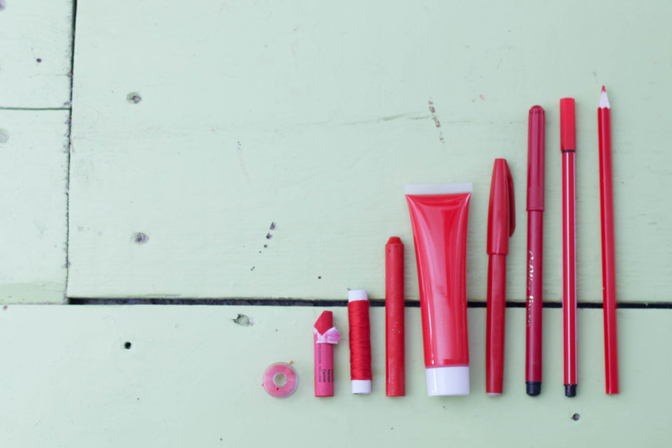Partner Content

Let’s cut to the chase here: if you have a hand in creating, using, or communicating branded content, you don’t need us to explain why brand guidelines are necessary.
From typography and tone of voice to color palettes and logo variations, a brand guide is an essential rulebook on how a company presents itself to the world. They get everyone—marketers, designers, and agencies—singing from the same song sheet, so your brand can create a distinctive, recognizable, and consistent identity. Pretty important stuff, right?
Granted, there’s common consensus that brand guidelines are invaluable. But there’s also an all-too-common problem in how they’re communicated and used (or more accurately, not used)
Before we get to the problem, let’s first give some context.
By and large, the creation and communication of a company’s brand guidelines rest with the ‘creative’ types, i.e. designers and copywriters, who are tasked with breathing life, colour, and character to a brand’s identity.

And boy, oh boy do they take this job seriously. Lord have mercy on the poor email marketer who dares to use the Arial font instead of Helvetica for a headline! It’s a common stereotype that designers can be precious about the small details that non-designers often overlook or shrug off as unimportant.
But think about it: guidelines represent a brand’s personality, incorporating all the tiny little elements that make a brand different to competitors, and recognizable to consumers. Creating this single source of truth is no mean feat: designers can spend countless hours on all the nitty-gritty details that bring a brand to life, with many companies even outsourcing this effort, which can cost thousands.
And for those undertaking the painstaking process of summarizing a brand’s DNA into one cohesive whole—appropriately named a “Brand Bible” by many—they’d feel some sense of personal ownership, pride and protection over the final product, right?
This explains why the gatekeepers of a brand’s guidelines are often inflexible, change-averse, and expect strict adherence to the guidelines they poured so much effort and time into.
But the consequence of this is often a set of rules that are rigid, dogmatic, overly-exhaustive—and most detrimentally—not user-friendly.
Being in the business of branding here at Bynder, it’s an all too common problem we’ve seen among many companies today. While the business world has undergone huge transformations during the digital era—more channels, more content types, more automation—the execution and function of brand guidelines are often stuck in the past, no longer fit for purpose.
Brand guidelines should be just that – guidelines! No brand identity should be treated as a fixed gospel that’s governed by hard and fast rules. It needs room to be dynamic, open to new innovations, and adaptive to change—the new norm of today’s digital, more agile marketing.
Times have changed, and a 50-page PDF file buried in yet another marketing folder just won’t cut it anymore.
The marketing rulebook on how brands can stand out from competitors and resonate with consumers is changing by the year, due in part to ever-evolving technology and increasingly discerning consumer habits.
If speed, innovation, and change is the name of the game for modern businesses—then why are so many brand guidelines still stuck in the 90s?
Okay, that’s enough about what brand guidelines shouldn’t be. What makes for a kick-ass Brand Bible that people will actually use?
1. Follow the KISS principle (Keep It Simple, Stupid)
One of the main reasons for any set of brand guidelines not being used is that they’re overly complicated.
Look, we get you feel strongly about everyone using the Oxford comma, all of the time and in any and all forms of written communication, but sometimes this excessive attention to detail can alienate the people who need guidelines the most.

Simplicity doesn’t have to be superficial; details are important in creating a distinctive brand—but also keep it concise, engaging, and light on the technical jargon. If a colleague needs an in-depth explanation on some design principle, I’m sure they’ll know who to reach out to.
2. Make sure it’s easily accessible
If you keep getting asked where your brand guidelines are located, then chances are the correct answer is: “Uh, in the wrong place”.
This is your brand’s manifesto we’re talking about; it deserves a little more attention than your average internal marketing asset. The more accessible it is, the more eyes you’ll get on it, and subsequently the more informed your team will be on what’s new with your branding.

Ideally, it shouldn’t need downloading; it should be centrally located online—ideally ideally, it should be integrated as part of your digital asset management solution.
3. Make sure it’s easy to update
Think about all the marketing, social media, and tech trends that come and go these days. Those brands that stay on top of these developments and keep up with changing consumer habits are the ones that’ll survive and thrive.
And your brand guidelines should be equipped to deal with change. If there’s a new social media platform, or a major update to some design software, then having the ability to easily refresh your guidelines with this new information is essential for keeping your brand innovative, adaptive, and relevant to the here and now.
4. Make it "look & feel" like your brand
For us humans, some things are pretty universal. We love colours, pretty things, and the ol’ familiar. And the same applies to brand guidelines.
If it’s supposed to reflect your brand’s personality, is a black-and-white wall of text really an accurate representation? That’s not going to keep anyone’s attention.
Instead, bring your brand to life: eye-catching colours, flashy visuals, and the distinctive tone of voice used for consumers. That way, you don’t need to explain this stuff; the “look & feel” does it for you.


